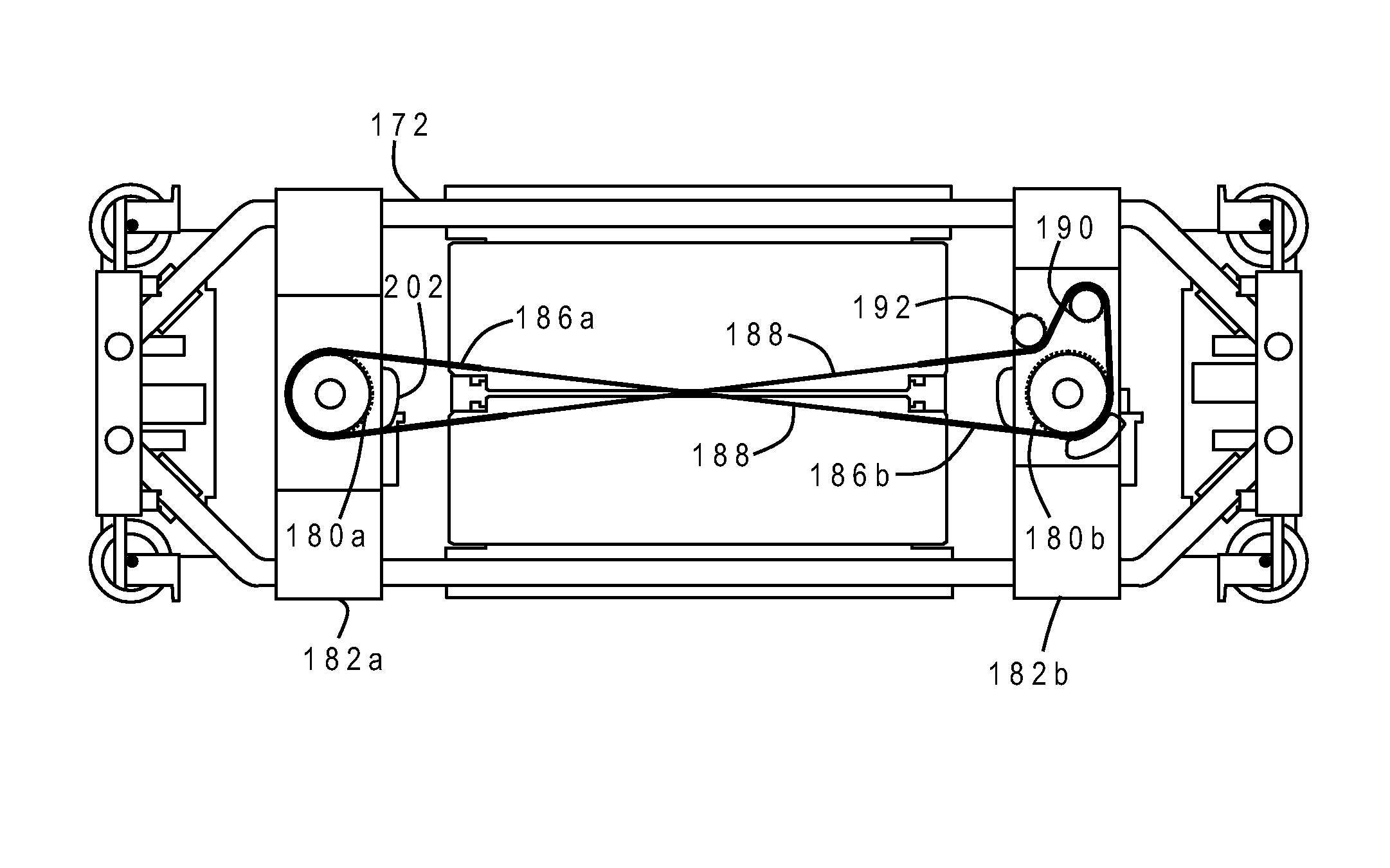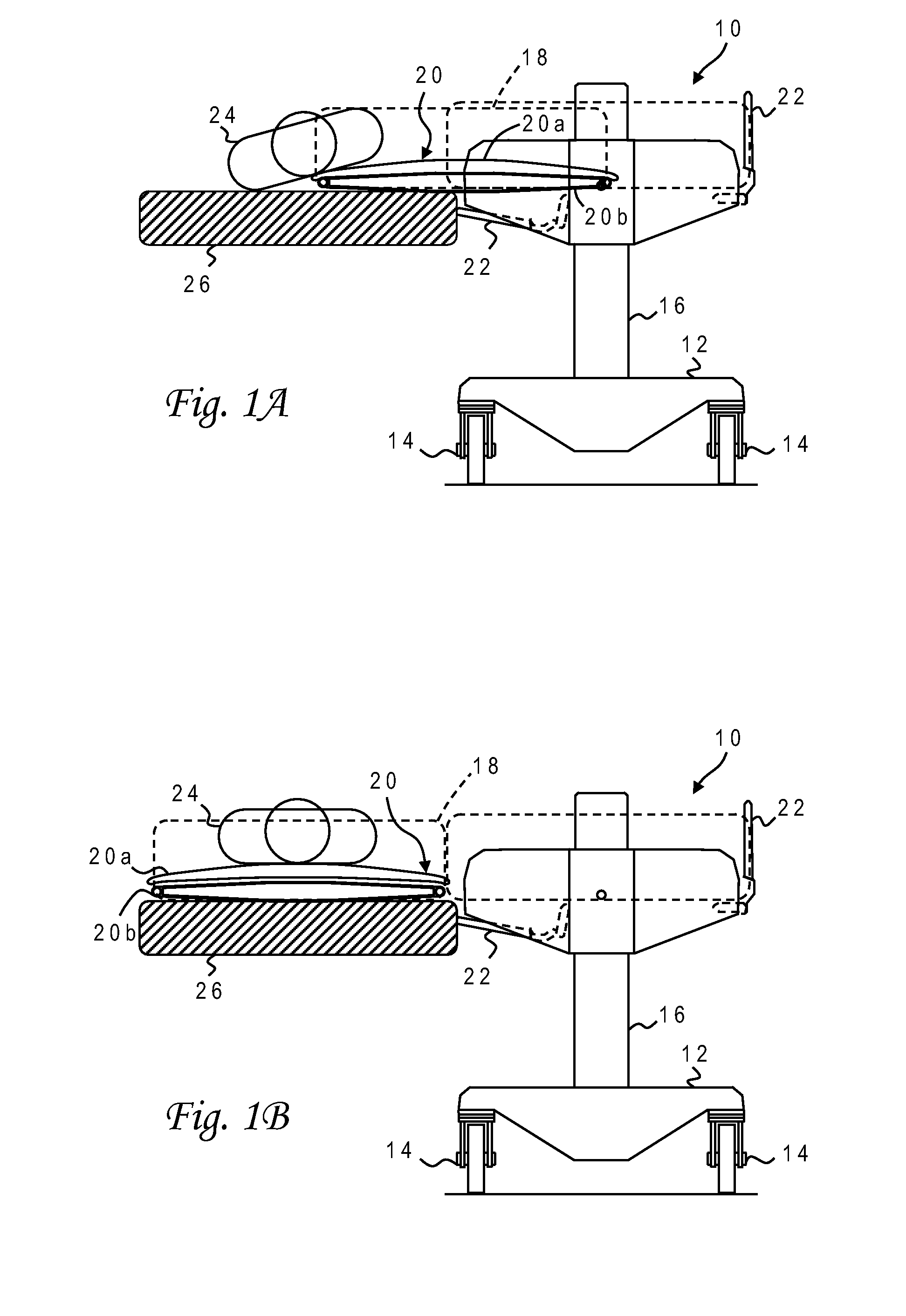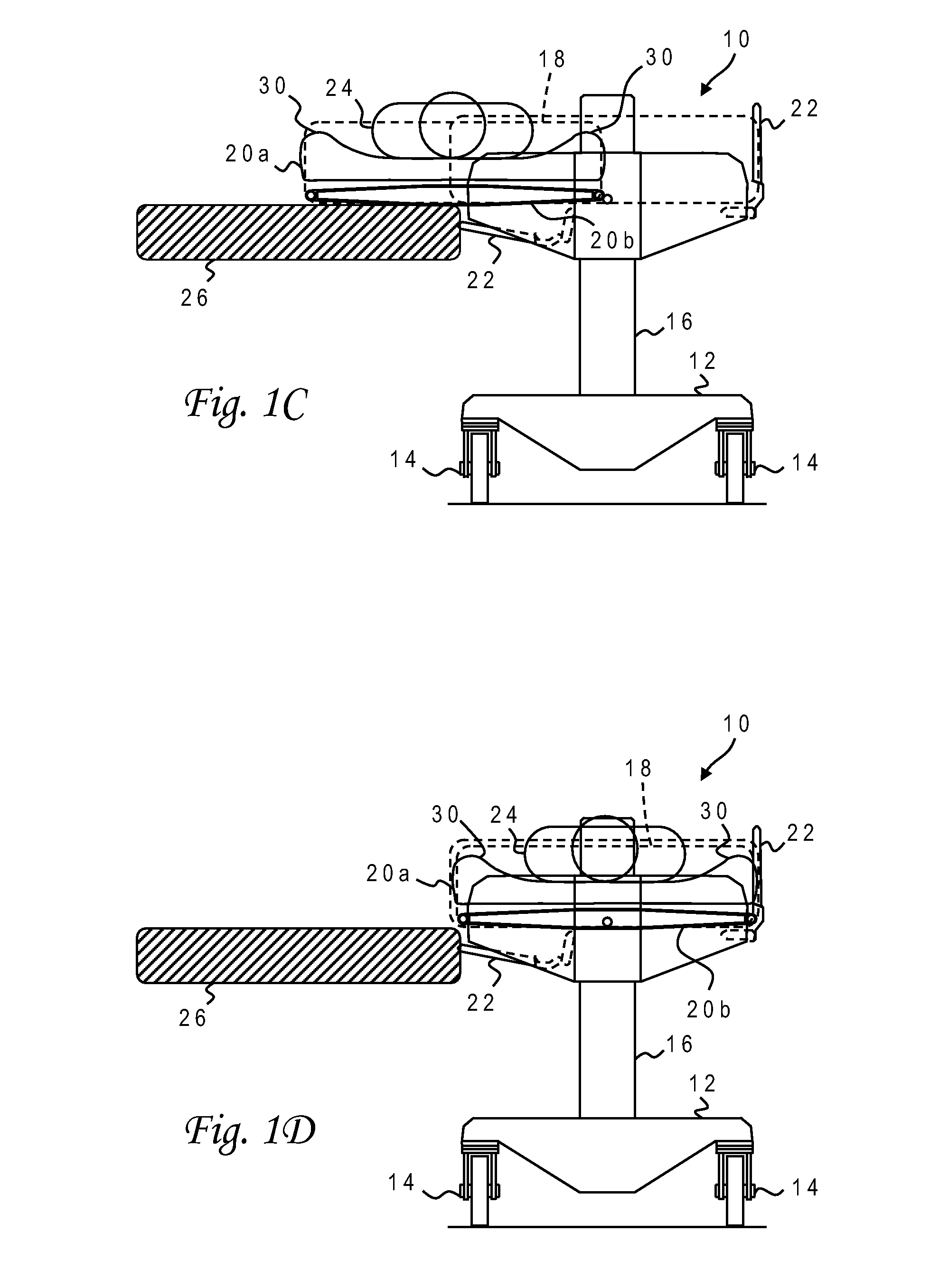Steering system for patient transfer device
a technology for transferring devices and steering systems, which is applied in the direction of wheelchairs/patient conveyancing, applications, transportation and packaging, etc., can solve the problems of not being able to use devices in all settings, exacerbate the problem of rotating belt designs, etc., and achieves the effect of facilitating and comfortably acquiring, transporting and delivering patients, and allowing hyperextension of the tabl
- Summary
- Abstract
- Description
- Claims
- Application Information
AI Technical Summary
Benefits of technology
Problems solved by technology
Method used
Image
Examples
Embodiment Construction
)
[0036]With reference now to the figures, and in particular with reference to FIGS. 1A-1D, there is depicted one embodiment 10 of a patient transfer device constructed in accordance with the present invention. Patient transfer device 10 is generally comprised of a frame or base 12 mounted on four or more wheels or casters 14, two vertical support members or columns 16 mounted on base 12 which contain powered elevating and lowering means for horizontal slide assemblies 18 attached to support columns 16 and to a belt table sub-frame (not shown) that maintains spacing and vertical alignment of the horizontal slide assemblies and also provides synchronized drive power to each slide assembly so they stay in alignment during the extension and retraction process, a table assembly 20 attached to slide assemblies 18, and side rails 22 attached to the belt table sub-frame.
[0037]FIG. 1A illustrates a patient acquisition position of slide assembly 18 and table assembly 20 wherein a leading edge...
PUM
 Login to View More
Login to View More Abstract
Description
Claims
Application Information
 Login to View More
Login to View More - R&D
- Intellectual Property
- Life Sciences
- Materials
- Tech Scout
- Unparalleled Data Quality
- Higher Quality Content
- 60% Fewer Hallucinations
Browse by: Latest US Patents, China's latest patents, Technical Efficacy Thesaurus, Application Domain, Technology Topic, Popular Technical Reports.
© 2025 PatSnap. All rights reserved.Legal|Privacy policy|Modern Slavery Act Transparency Statement|Sitemap|About US| Contact US: help@patsnap.com



